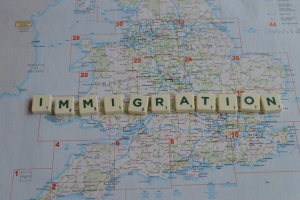Support migrant centric journalism today and donate

 • WatchThis Video
• WatchThis VideoThe government organization, Statistics Canada, has released census data this week showing that approximately two-thirds of Canada's population growth is currently accounted for by immigration.
In the last several years, Canada has recognized that it does not have a high enough birth rate to sustain its population and thus support its growing economy. The federal government and the provincial governments have been engaged in strong efforts to attract immigrants, especially skilled immigrants, from around the year to prevent the situation from becoming a crisis.
During 2006, international migration accounted for almost 70% of second-quarter population growth compared to 52% growth as typical during the second quarters of the 1990s.
Among the G-8 countries in the most recent report, only the United States, at 5.0%, approached Canada's growth of 5.4%. France and Italy each grew 3.1%, the United Kingdom 1.9%, while growth for Japan and Germany was nearly zero. Russia's population shrank by 2.4%.
Germany and Japan have recently realized their own potential crises as their aging populations are not producing enough new workers to sustain persons retiring from their work forces. This same trend is being faced by a number of westernized nations such as Australia and New Zealand, in addition to the others already mentioned.
Increasingly, worldwide there is intense competition for young, educated and skilled workers to come into established economies. Canada was one of the first countries to aggressively open its immigration system as wide as possible to attract immigrants.
With some of the most liberal immigration policies in the world and strong, state-sponsored programs to help businesses and immigrants, Canada is taking a strong lead in competition. The second largest country in the world, it only has a total population of just about 33 million.
The country has an economy that is picking up steadily as it begins to develop its extensive natural resources. To prevent the economy from stagnating, workers are needed immediately across a very wide range of professions. Currently, Ontario, Alberta, Quebec and British Columbia are the provinces that have been attracting the largest numbers of inward migration for the past several years.
It is being predicted that immigration will increasingly account for population growth in Canada. With a current birth rate of only 1.5 children per woman, the country is in danger of a negative growth rate without a large inflow of immigrants. 2.1 births per woman is considered a zero-growth population rate.
About 1.2 million new immigrants accounted for most of Canada's growth over the last five years, much more the addition of 400,000 native-born citizens. From 2004 until 2005, just over 310,000 immigrants entered Canada, and from 2005 until 2006 nearly 324,000 immigrants came in. The upward trend is expected to continue when final numbers are published later this year for 2006 to 2007.
"We have not strategically thought through how we should manage our largest single source of population for net growth," Michael Bloom, a vice president with the Conference Board of Canada, told The Canadian Press.
The country's shift toward immigration as the only source of growth is still more than 20 away, and will happen until after 2030, when the peak of the baby boomers born in the 1950s and early 1960s reach the end of their lives.
"You're going to see an increase in the number of deaths in Canada, and the number of deaths will exceed the number of births - so natural increase will become negative," said Martel. "The only factor of growth will then be immigration."
Related :
• Canada faces low birth-rate challenge• Canadian resort industry wants improved Working Holiday Visa program
• Canada improves Temporary Foreign Worker Program
• Canadian construction industry looking overseas for skilled labour
• Help announced for bringing foreign workers to Ontario, Canada
• Alberta, Canada experiencing economic boom, needs unskilled workers
• New work permits for foreign students
• Facing worker shortage, Japan weighs immigration
• German population falling, increased immigration seen as partial solution
• Ageing Australian population fears immigration less
• EU needs immigration to support ageing population





















